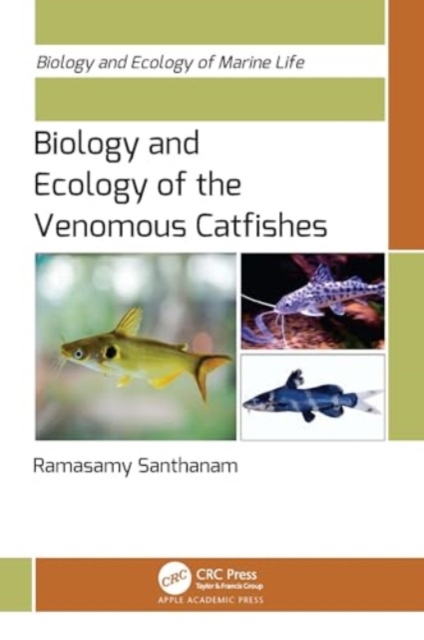
Biology and Ecology of the Venomous Catfishes Hardback
by Ramasamy Santhanam
Part of the Biology and Ecology of Marine Life series
Hardback
Description
Here is a first-of-its-kind volume on the biology and ecology of venomous and traumatogenic freshwater and marine catfishes.
This comprehensive volume first provides an introduction to venomous catfish families and then goes on to describe and explain their diversity, species, characteristics, geographical distribution, venomous symptoms, ecology, and the pharmaceutical value of catfish venoms. Catfish form an important group of fishes with many different roles, including as food, as ornamental fishes, and for sport fishing.
Catfish are found to be distributed worldwide but are most abundantly distributed in the tropics of Asia, Africa, and South America.
Like jellyfish, scorpions, and snakes, several species of catfish have been reported to be venomous with their painful stings.
The major groups of persons at risk for catfish envenomation are fishermen and water sports participants.
It is estimated that 1625 species of catfish are venomous although this has been studied for only 158 species.
While some species of catfish cause mild envenomation, several species have been reported to cause severe envenomation associated with secondary bacterial infections.
The symptoms related to catfish envenomation include local intense pain, edema, erythema, paleness, and cutaneous necrosis.
Notable species of catfish causing serious envenomations include the Arabian Gulf catfish (Arius thalassinus), Carolina madtom (Noturus furiosus), and Oriental catfish (Plotosus lineatus). Providing extensive information, this volume serves as a text and reference for students and researchers of several disciplines, such as marine biology, fisheries science, and aquatic biology; as a guide for physicians and environmentalists; and as a valuable reference book for marine libraries of colleges and universities.
Information
-
Pre-Order
- Format:Hardback
- Pages:260 pages, 23 Tables, black and white; 7 Line drawings, black and white; 13 Halftones, color; 185 Ha
- Publisher:Apple Academic Press Inc.
- Publication Date:13/05/2024
- Category:
- ISBN:9781774914526
Information
-
Pre-Order
- Format:Hardback
- Pages:260 pages, 23 Tables, black and white; 7 Line drawings, black and white; 13 Halftones, color; 185 Ha
- Publisher:Apple Academic Press Inc.
- Publication Date:13/05/2024
- Category:
- ISBN:9781774914526










